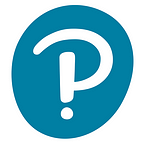Online tutoring: Giving students a place to ask “dumb” questions
By Benjamin Gaines
“It all started with the smartphones… being constantly connected like that made kids unable to focus on anything for more than ten seconds.” Many of us have heard this complaint before from frustrated colleagues, parents, or educators.
Past generations worried that youths’ obsession with reading novels would ruin them. The world those youth built worried about their own children’s minds being rotted by film and later television. And the generation that grew up with television worried about the nascent internet and the effect it would have on their children. Our modern frustrations and anxieties about the millennial emphasis on smartphones and other mobile devices is part of a longer history.
All these ideas came up during a live online tutoring session some months ago. I was working with a student who had composed an essay that didn’t match the basic parameters of the assignment. Once the student (let’s call her Sarah) understood the problem, she was disappointed, but eager for help building a new paper. As is so often the case, we began by talking a little about topics and how to develop a strong thesis statement for her assignment type.
While Sarah initially responded to my questions about her ideas, she quickly lost focus. When prompted to tell me a bit more about her new idea for a thesis, she responded with a question about another part of the paper or grammar. “How does the introduction start?” “How many supporting examples is right?” “What should go in the conclusion?”
These were all fair, reasonable questions, but their break from our topic at hand made it rather challenging to keep focused. I did my best to answer her questions while redirecting her back to our primary issue, and we eventually managed to develop a new thesis statement and a solid plan for her to begin her new draft.
After the session ended, I realized that I’d met several other students like Sarah to one degree or another. These students had diverse problems and reading/writing skill levels, but they each had difficulty staying focused on a single part of the paper until the task was complete.
My initial reaction was to wonder if the constant switching between a new text, a snapchat video, a groupme reply, a tweet, and back to that first text could be causing this problem. Was too little time on one task weakening these students’ focus? Was such fragmented multitasking teaching an entire generation to approach communication in a less coherent way?
After a moment, I shook my head and chided myself for being the latest in that chain of “oh no, the books/tv/internet/devices are ruining today’s youth!” worriers. Cultures shift, and technology advances. “Get with the times, or be left behind” as they say.
But that sort of aphorism didn’t seem quite right to me either. How we learn to process information really does impact us. I’m a different person today because of the role media and technology played in my youth. Typing up every paper I wrote from middle school onward definitely changed my relationship with language. To me, the written word is more casually mutable than it would be if I’d written everything longhand my whole life. Moving text around on a page at will is vastly convenient, and it encouraged me to experiment. The ease and speed with which I could type and retype a sentence certainly changed the way I approached wordplay and revision.
Why would this not be true for millennials as well? Rapidly switching between texts to parents, friends, and romantic interests may implicitly teach subtle aspects of tone and audience. Perhaps there are lessons in multitasking precision being learned by today’s students that are the modern analogues to my own younger self’s experiences with a keyboard.
Understanding the unique experiences born of both culture and technology that our students encounter can help us address and navigate these challenges. A student of today might have no more trouble focusing than a student of a hundred years ago, but the solution to each problem must be viewed through the lens of that student’s experiences.
We have a policy on the whiteboard to end each of our comments with either a question for the student to respond to or specific instructions for the student to follow. My session with Sarah reminded me of exactly how important staying on task can be, and that gave me insight into how the issues of attention span and focus naturally filter themselves through the experiences of millennials.
At the same time, maintaining flexibility of topic and letting a student ask seemingly unrelated questions, even what they may feel are “dumb” questions, can have real benefits. The natural point of balance I’ve found with controlling the direction of these kinds of sessions is to be more like the rudder on a boat than the tracks beneath a train. Perhaps this more fluid style will become the norm in education, or perhaps the next innovation is something still waiting beyond the horizon.
See more stories like this at www.pearsoned.com
Benjamin Gaines is a lead tutor who joined Smarthinking five years ago. He received his MA in English Literature from Westfield State University in 2009. His thesis explored the evolution of romantic friendships in fin de siècleBritish literature. He has worked as a script consultant in the film industry and served as story editor on the graphic novel Freedom Edge. In his free time, he enjoys writing speculative short fiction.
